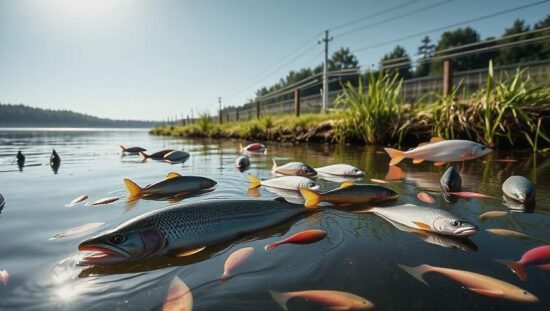German aquaculture industry produces 16,700 tons of fish in 2024, a slight decrease of 0.6 percent compared to the previous year, according to the Federal Statistical Office (Destatis). The shellfish production in 2024 reached almost 15,900 tons, a decrease of 11.9 percent or around 2,100 tons compared to the previous year. Fish and shellfish accounted for 99.5 percent of the total aquaculture production of 32,800 tons, with the remaining 1 percent comprising roe, caviar, crustaceans, algae and other aquatic organisms.
Rainbow trout, char and other trout-like fish made up more than half of the total fish production, with 9,800 tons, or 58.3 percent. The most significant representatives were the rainbow trout, with 5,400 tons, the salmon trout, with 1,900 tons and the Elsass char, with 1,400 tons. Compared to the previous year, the production of rainbow trout decreased by 380 tons, or 6.6 percent and the production of Elsass char by 170 tons, or 10.4 percent, while the production of salmon trout increased by 100 tons, or 5.6 percent.
Another quarter of the fish production, around 4,800 tons, or 28.5 percent, was made up of carp, sheatfish and other carp-like fish, with a production increase of 7.3 percent or 320 tons compared to the previous year. The common carp, with almost 4,300 tons, accounted for 91 percent of this production, with a production increase of 6.9 percent or 280 tons after a decrease in the previous year. The European eel also played a significant role in fish production, with almost 1,200 tons and its production increased by 2.4 percent or around 30 tons compared to the previous year.





